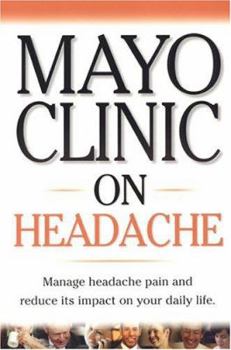Mayo Clinic On Headache ("MAYO CLINIC ON" SERIES)
Select Format
Select Condition 
Book Overview
No Synopsis Available.
Format:Paperback
Language:English
ISBN:1893005356
ISBN13:9781893005358
Release Date:January 2004
Publisher:Mayo Clinic
Length:214 Pages
Weight:0.75 lbs.
Dimensions:0.7" x 6.0" x 9.0"
Customer Reviews
1 rating
How Do You Make That Pain Go Away?
Published by Thriftbooks.com User , 19 years ago
Mayo Clinic on Headache is the best resource I've seen for explaining what is known about headaches, how they originate, how to avoid them and how to reduce their duration and discomfort. The book's only weakness is that it came out before the research findings that COX-2 inhibitors (such as Vioxx) can be dangerous to your health. So be sure to discuss those products with your physician before taking them for headache relief. More is known about how to treat the symptoms of headaches than how to avoid them or cure their sources, and this book looks candidly at all these areas. The primary value of the book, however, is in helping you decide if you should treat your headaches yourself . . . or seek the aid of a physician, or complementary remedies. The book does a good job of explaining which types of headaches can be symptoms of some more serious disease and which aren't, and what a physician might be able to do for you that you cannot do for yourself. About a quarter of the book deals with migraines, but you get plenty about standard tension headaches plus the rarer forms such as cluster headaches, daily chronic headaches, neuralgias, and headaches where a treatable disease or injury is present. The book also helps you understand how to describe your headaches to physician which can speed and help ensure relief. Many books about a particular health problem treat everyone the same in the text. This book avoids that limitation through a 30 page section on the special issues of women, children, teens and older adults. I don't often have headaches. I decided to read the book to understand more about the problems of family members and friends who have severe headache issues. The book more than fulfilled my hopes for increased understanding, and I'm sure my support for them will be more effective in the future as a result. For example, the book cleared up my confusion about what a rebound headache is (caused by overusing certain analgesics). Ultimately, you have probably wondered how a part of the body that doesn't have nerves can have pain associated with it. I thought the explanations were very helpful. Parts of the areas near the brain do have nerves . . . and we use our brains for cognition. Although no one knows all the answers, you'll be interested to better understand the processes involved and how medications and other treatments work.





